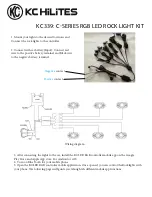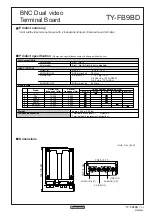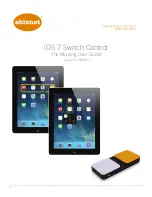
6RL SERIES OPERATION MANUAL
SECTION 7: REMOTE PROGRAMMING
Entire Contents Copyright
2018 by Adaptive Power Systems, Inc. (APS) • All Rights Reserved • No reproduction without written authorization from APS.
6RL Series Regenerative DC Load Operation Manual
Page 122 of 204
7.6.2
First steps
In order to communicate with the unit, the software used on the PC must be able to open a
COM port and send messages in either binary (ModBus protocol) or ASCII strings (SCPI)
format.
For SCPI mode, a simple terminal program suffices. For binary telegrams in hexadecimal
format, other tools are required, like Docklight (
). Those can help to see
how the communication works correctly or at all.
To finally establish communication and access the unit via USB, you need to:
1.
Connect the unit via USB (alternatively via any other digital interface).
2.
Install the USB driver (see 4.6.1).
3.
Run a terminal program.
Note: In order to control a unit, i.e. changing values or status by switching, the DC Input on
or off, it is required to activate remote control first. This does not happen
automatically when sending the very first command.
Note: Switching to remote control may be blocked by the unit. When using SCPI language,
the unit never returns error messages automatically, but only upon an error query
command request.
7.7
Other Digital Interface Communication
The Profinet/IO module (1 or 2 ports) can be used to control and monitor a unit using a
network system, usually combined with an integrated PLC and proper software. For
Profinet, the software selects the necessary Ethernet port, because this port cannot be
adjusted on the unit. The standard Profinet communication is different and is handled by
the field bus protocol via special software.
7.8
Register Lists
Along with this manual, there are register lists (one for each model series) available as PDF files.
These provide an overview of the remote programming features that are available for a
certain model series when using binary communication protocols like ModBus.
These lists differ in the number of available registers, i.e. commands. They are primarily
made for ModBus protocol communication, but are also a reference when controlling a unit
via a field bus (CAN, CANopen, Profibus, Profinet, EtherCAT) or accessing it in programming
environments like LabView or MatLab, for example when trying to interpret values or to
understand the function of a certain command.
The lists explain in compact format how the data in a binary message has to be interpreted
or how a register (with CANopen resp. EtherCAT it is called "index") is specified. This will help
the user to implement the unit communication into custom software applications. Users who
decide to work with SCPI command language usually do not need those lists. Later in this
document, the SCPI commands are referenced in a separate chapter.
Columns with information provide in these lists are:
Summary of Contents for 6RL Series
Page 203: ......
















































